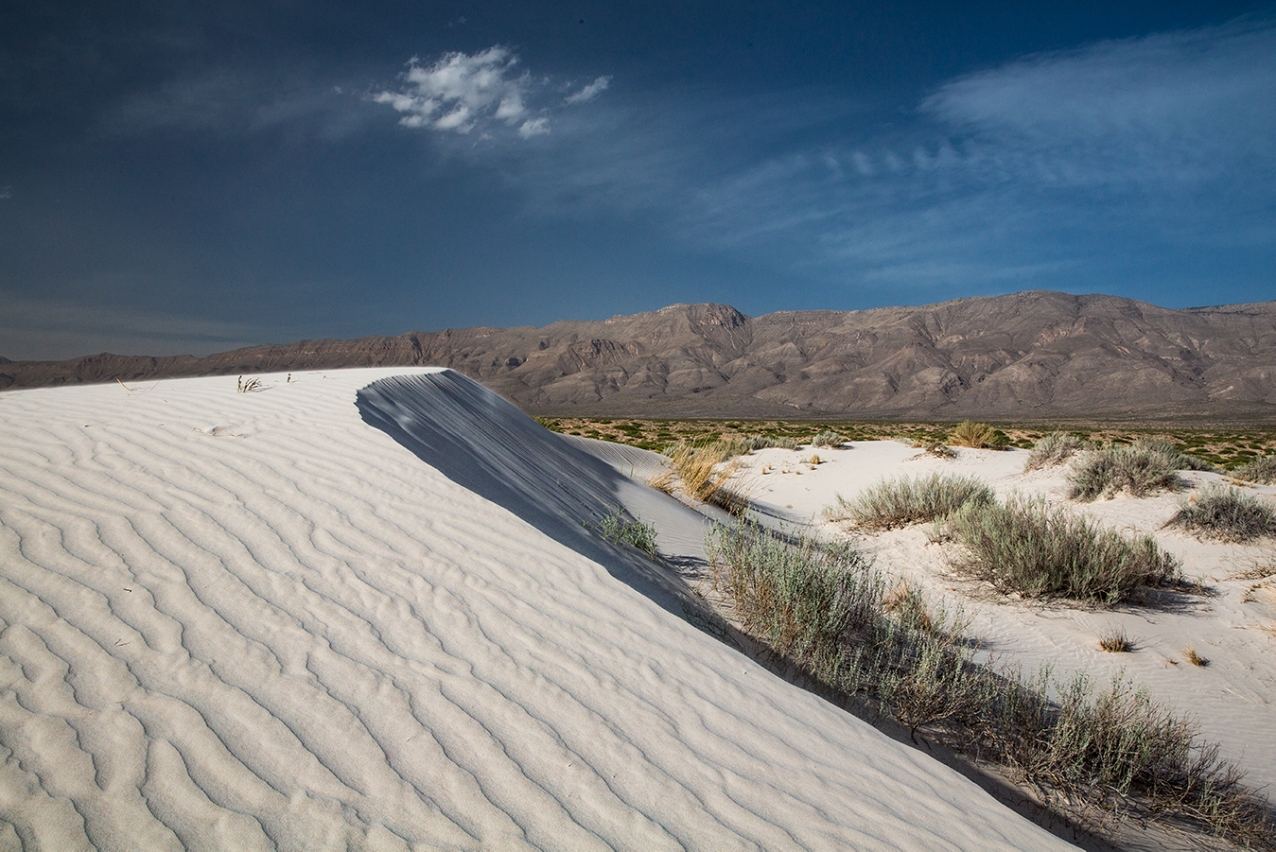Occasionally, I enjoy visiting things that are “off the beaten path”, or in this case, totally “off the grid”. I also have a “thing” for photographing desert sand dunes. The Salt Basin Dunes section of the Guadalupe Mountains NP scratches both of those itches. Located in a remote area of the New Mexico-Texas border, it is far, far away from anything that resembles a modern urban area. While the map shows the town of Dell City nearby, it is in reality little more than an agricultural community, and offers travelers nothing more than a convenience store, and one cafe, which was only open during lunch hour (at least on the day we passed through). Driving east out of Dell City on several gravel/dirt roads for about 12 miles, you reach a solitary trail head.
The dune field is made of gypsum, similar to White Sands National Monument, but the Salt Basin is a much smaller size in area. The dunes themselves are also much smaller in stature, and there is much more vegetation growing amongst the dunes than you will find at White Sands. This makes hikes and photography in the Salt Basin a much different experience from a visit to White Sands.
One the day of our visit, the winds were blowing quite hard, and airborne dust and sand made anything on the distant horizon appear very hazy. When we first saw the Salt Basin from Dell City, it looked like a white hazy sandstorm, and we thought our visit might be a bust. Once we made it to the Salt Basin, however, visibility around the dunes was sufficient for navigating around and taking photos. You still had to deal with stinging wind blasts of sand, and it was best to keep your camera and lenses covered up when not making an image. It did provide the added bonus of wiping the dunes free of footprints from humans, revealing pristine textures and ridges on the sand. We were the only people at the dunes that day, making for a nice wilderness-like experience.
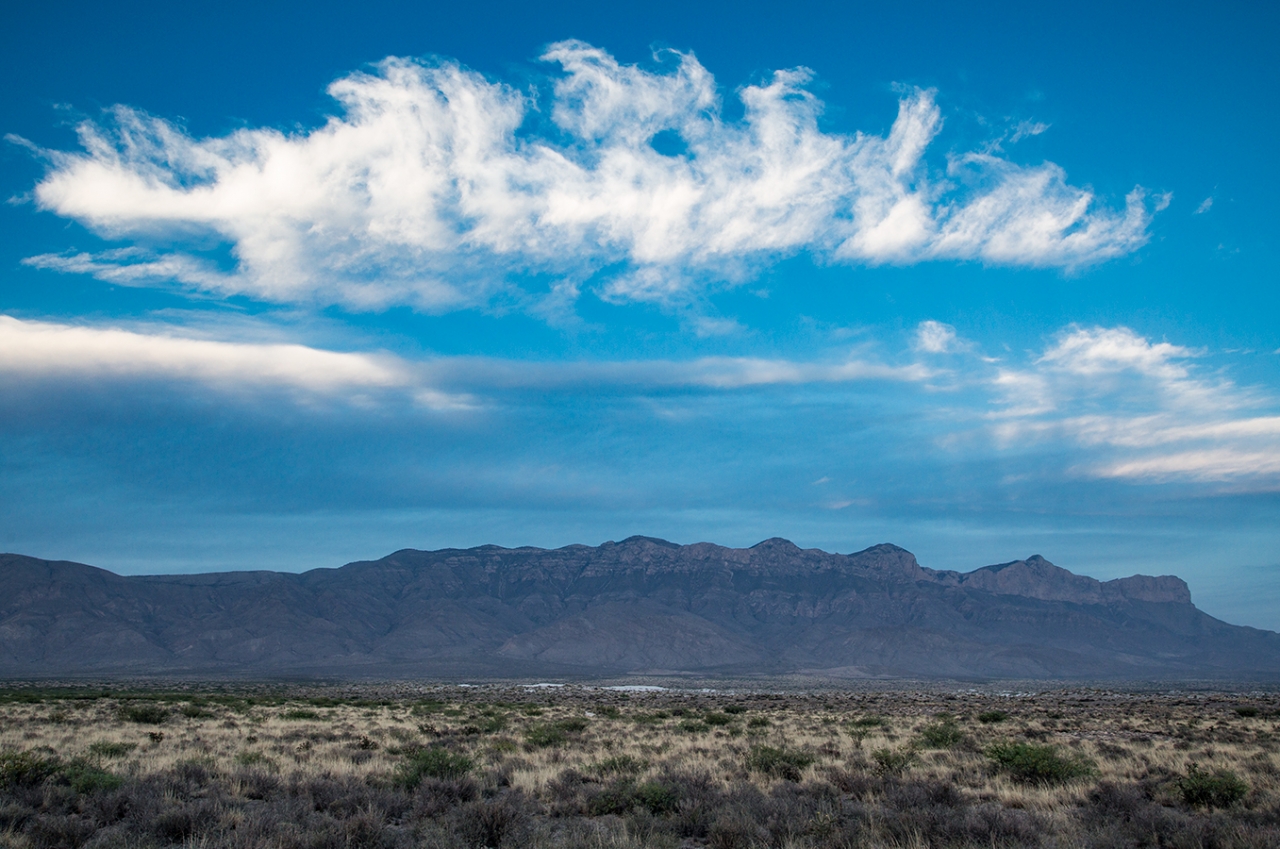
If you look closely, you can see a small sliver of white at the foot of the Guadalupe Mountain range. This is the setting for the Salt Basin Dune field. To get to the dunes, you must hike about a mile of dirt track through grass and brush from the trail head. The trail head is located off a small parking area at the end of Williams Road, which also has an outdoor restroom and a covered picnic area.
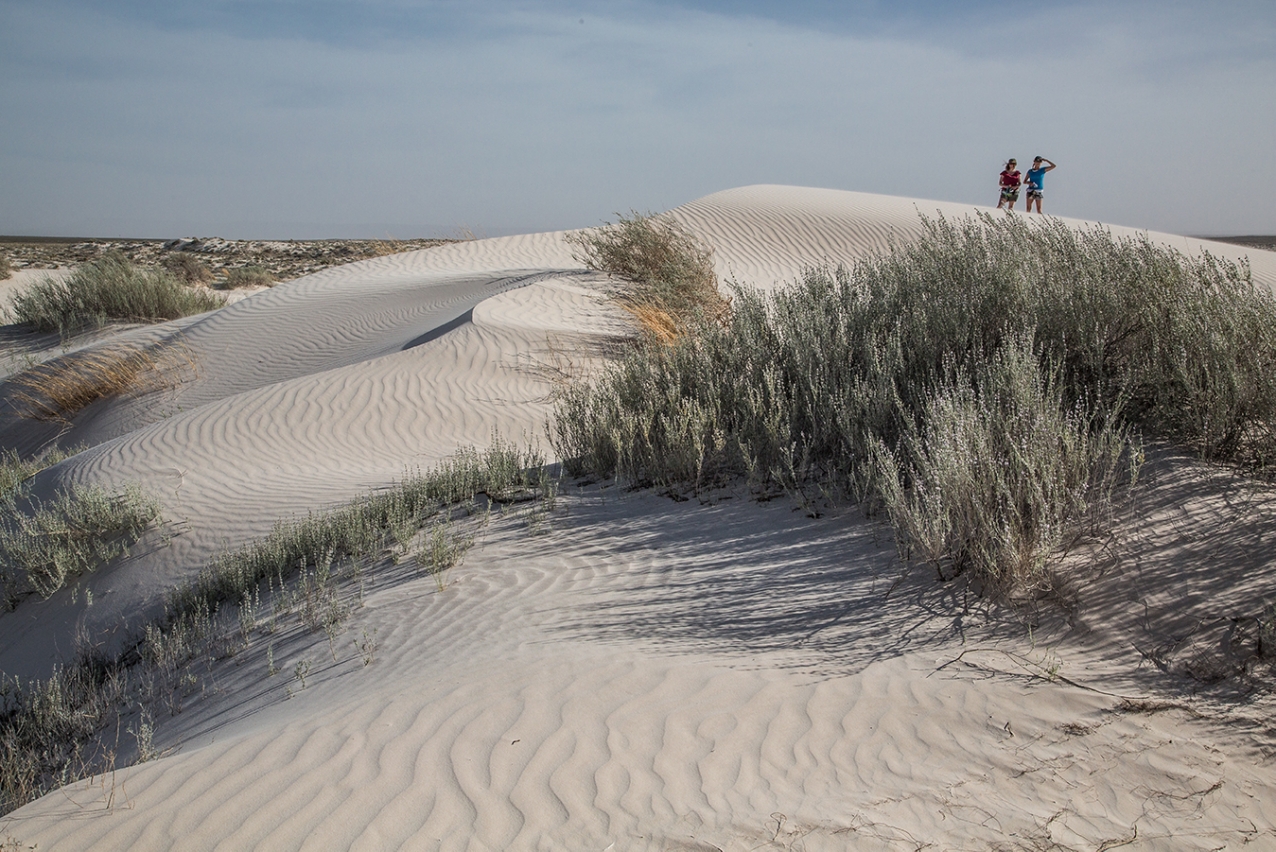
My hiking family companions, standing on one of the taller ridges in the dune field. The park officially lists the height of the dunes as ranging from 3 ft to 66 ft.
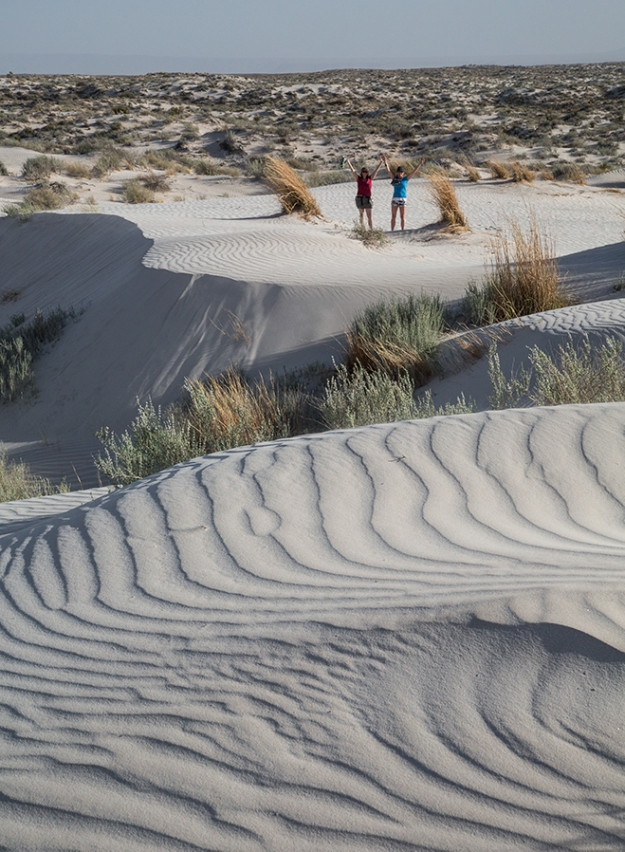
A hike through the dune field revealed many interesting dune shapes, including this humpback dune and plateau area.
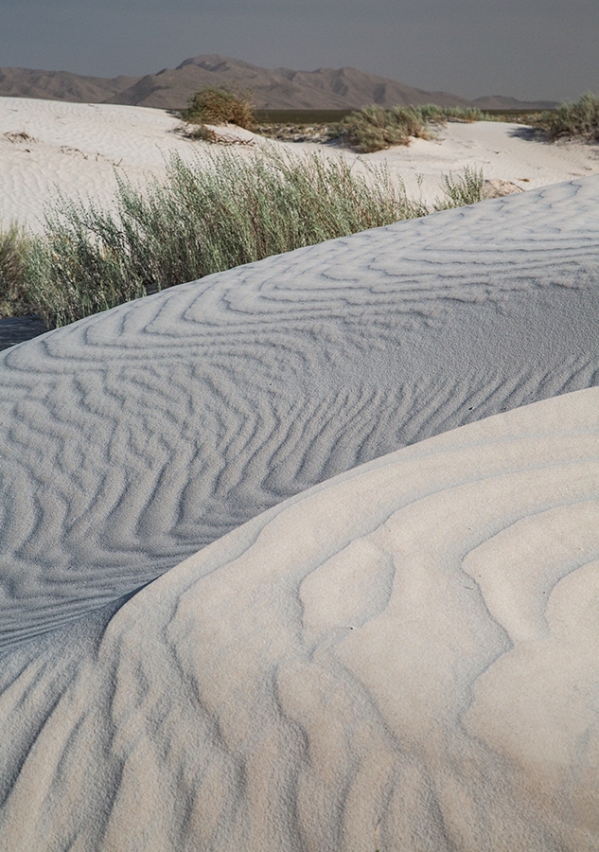
Smaller dune shapes and textures made for some very interesting layered images when using a longer focal length (88 mm).
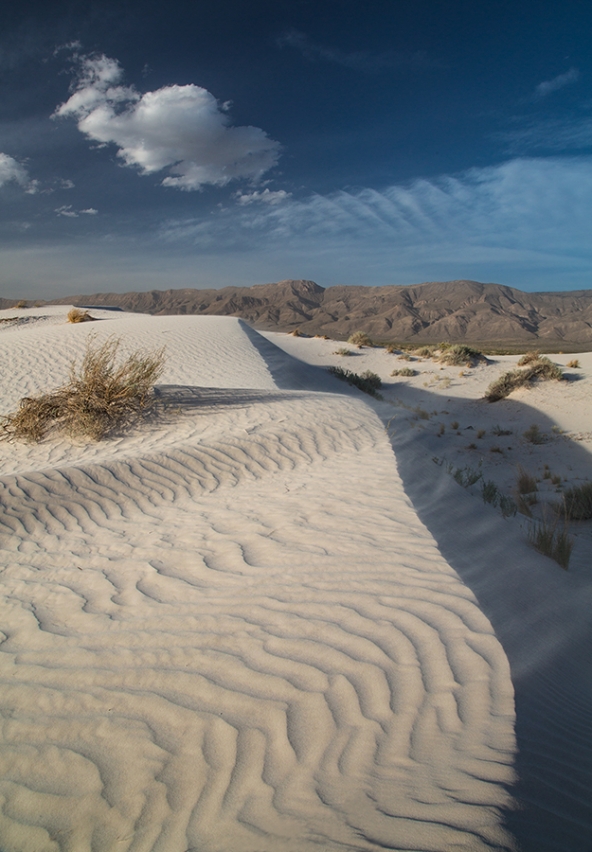
I experimented with different shutter speeds and exposure times to see what would capture the motion of the sand blowing across the dunes. This is a short exposure (1/125 second) showing the blowing sand going over the edge of the dunes. If you look on the shadowed, curved edge of the dune top, you can see faint, wispy fingers of sand blowing over the edge.
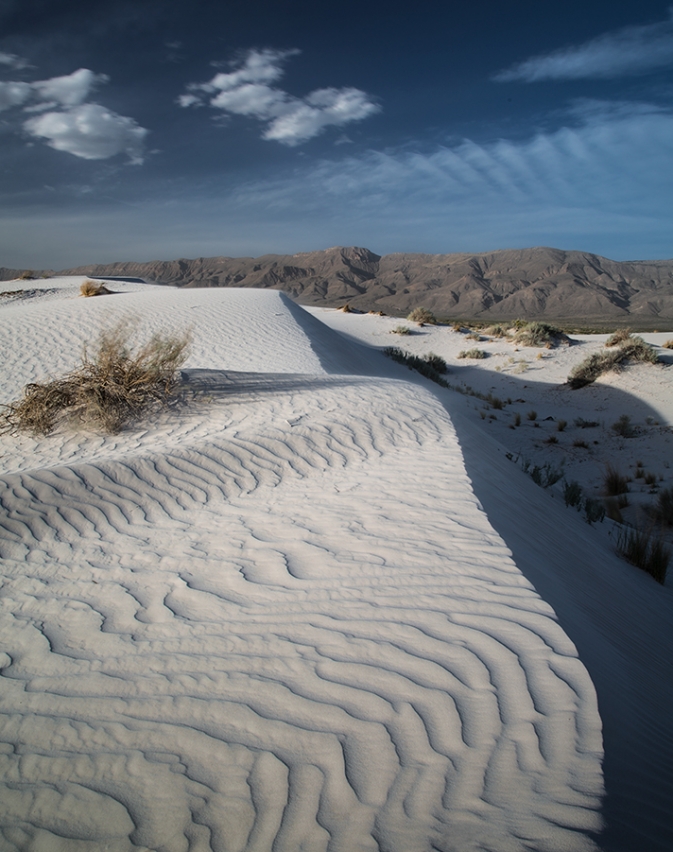
A longer exposure removed any visible evidence of blowing sand over the top of the dune (5.0 seconds). The white color of gypsum is more evident, and the ridges on the dunes are more pronounced, as they are no longer softened by the appearance of sand moving across the dune.
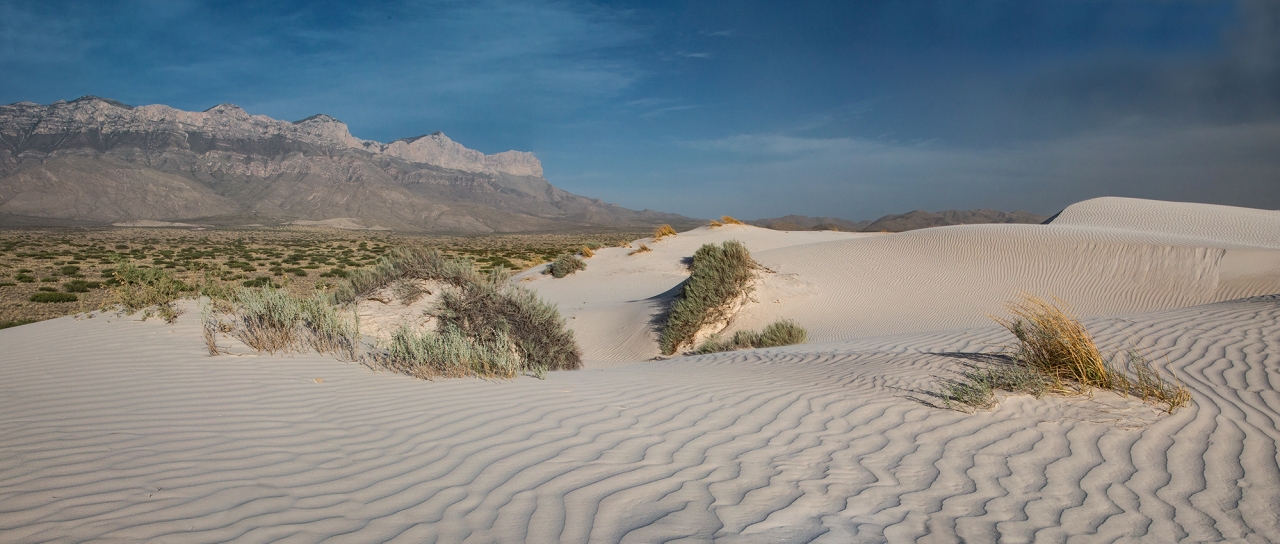
One of my objectives on this visit was to capture the dune field, with its sand ridge textures and shadows in the foreground, and the El Capitan rock formation in the background. I was able to capture this panoramic shot looking southeast over the edge of the dunes with the Guadalupe Mountain range and El Capitan in the background
